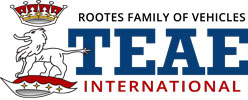relayed by Bill Miller
United X participants were able to meet and share the technical expertise and experiences of guest panelists:
- Don Sesslar – SCCA National Champion (Alpine), campaigned a Tiger in 1965.
- Tom Patton – Current Tiger competitor in SCCA GT2.
- Larry Marzano – Current Tiger competitor in SVRA – historic.
- Curt Bowland – Current Tiger competitor in SVRA – historic.
- Barry Schonberger – Current Tiger competitor in SCCA Solo II; B Prod National Champion, 1985.
- Bill Miller – “Retired” autocross competitor (Tiger).
- Doug Jennings – Sponsor, “engineer”, resource (Tiger, Alpine).
After short, biographic introductions, the panelists took several minutes to relate their area of interest/expertise. A question and answer discussion period followed, touching on brakes, gasoline quality, wheel & dire combinations and body stiffness. A condensed version of the topics follow.
Brakes
The four-wheel disc systems on Patton’s, Schonberger’s and the Hollywood Race Car were highlighted. Tom Patton has been allowed to install 11″ discs in his system. He has found that BMW discs can be adapted. Doug Jennings of Dayton, OH, “Tiger Auto” suggested that the 1962 Alpine system with no booster, 7/8″ rear cylinders, and a 3/4″ diameter master cylinder was the component mix he had gotten the best performance from. Participants suggested that “velvet touch” lined brakes were the desired components if they could be found.
Gasoline Quality
A fair degree of concern was expressed about gasoline quality by the street enthusiasts. Little info is available to confirm or refute concern road racing Tigers use racing quality gasoline. Street Tiger competitors have not encountered valve train damage that is documented as caused by low lead levels in the fuel. The consensus was that too few performance miles had been logged and that the real effect was still to be encountered. Most participants are blending leaded regular with unleaded high test at the pump, many combinations work. Several lead additives were discussed as being recently available. Most panelists recommended reductions in compression ratios as a prudent step to take during engine preparation. Valves, valve seats, and valve guides all should be watched closely as the remaining lead is phased out of today’s gasoline.
Wheel and Tire Combinations
13″ to 15″ diameter and 4.5″ to 10″ widths were discussed. It is difficult to settle on a single combination for stock of modified due to body and fender variations. Generally, the front valence panel will require trimming to permit increased width tires. Fit checking combinations on the car is recommended.
Observed during the convention were front widths to 6″ with 205/60 aspect ratio tires and rear widths to 7″ with 215/60 aspect ratio tires under stock wheel wells. (some trimming may have been done).
Uni Body Stiffness
Each competitor acknowledged that high performance driving has a negative effect on body stiffness. Door fit and sag problems are obvious results. Tom Patton has put the problem behind him with a tube frame and fiberglass body parts. For the other panelists, the only required actions have been observing a prudent inspection schedule of body and frame components and bungee cords to keep doors closed.
Our panelists and some of their cars will be highlighted in future newsletters.
